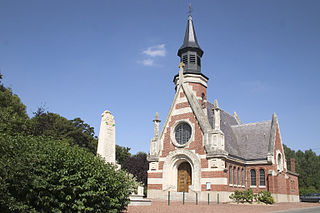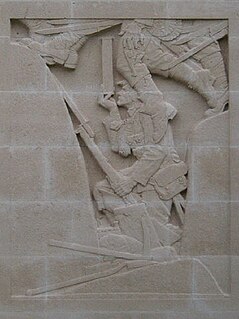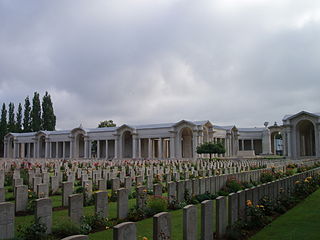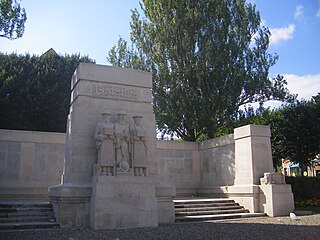| Vis-en-Artois Memorial | |
|---|---|
| Commonwealth War Graves Commission | |
View of the cemetery with the memorial in the background | |
| For forces of the United Kingdom and South Africa | |
| Unveiled | 4 August 1930 |
| Location | 50°14′46.56″N02°57′00.47″E / 50.2462667°N 2.9501306°E Coordinates: 50°14′46.56″N02°57′00.47″E / 50.2462667°N 2.9501306°E |
| Designed by | J. R. Truelove (architect) Ernest Gillick (sculptor) |
To the Glory of God and to the memory of 9903 officers and men of the forces of Great Britain, Ireland and South Africa who fell during the Advance to Victory in Artois and Picardy whose names are here recorded but to whom the fortune of war denied the known and honoured burial given to their comrades in death. | |
| Statistics source: Cemetery details. Commonwealth War Graves Commission. | |
The Vis-en-Artois Memorial is a World War I memorial located near the commune of Vis-en-Artois, in the Pas-de-Calais département of France. The memorial lists 9,843 names of British and South African soldiers with no known grave who were killed during the Advance to Victory, from 8 August 1918 to the Armistice (11 November 1918). The area of the frontline covered is described as "in Picardy and Artois, between the Somme and Loos". Canadian, Australian and New Zealand forces that fell during this period and were not found, are commemorated elsewhere on other memorials to the missing. [1] [2]

World War I, also known as the First World War or the Great War, was a global war originating in Europe that lasted from 28 July 1914 to 11 November 1918. Contemporaneously described as "the war to end all wars", it led to the mobilisation of more than 70 million military personnel, including 60 million Europeans, making it one of the largest wars in history. It is also one of the deadliest conflicts in history, with an estimated nine million combatants and seven million civilian deaths as a direct result of the war, while resulting genocides and the 1918 influenza pandemic caused another 50 to 100 million deaths worldwide.

A war memorial is a building, monument, statue or other edifice to celebrate a war or victory, or to commemorate those who died or were injured in a war.
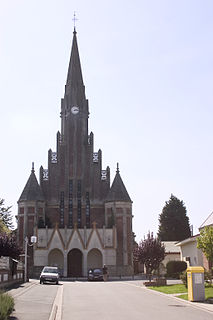
Vis-en-Artois is a commune in the Pas-de-Calais department in the Hauts-de-France region of France.
Contents
The memorial has a screen wall in three parts on which are carved the names of the missing listed by regiment. The central screen is flanked by 70-foot high columns, with a Stone of Remembrance at centre. The carvings include one representing St George and the Dragon. The memorial was designed by the architect J. R. Truelove, with sculpture by Ernest Gillick. The memorial was unveiled on 4 August 1930 by the Rt. Hon. Thomas Shaw. Shaw, a Labour Party MP and cabinet minister, was present in his role as British Secretary of State for War. Also present was General Walter Braithwaite, who had served in the Mediterranean and on the Western Front during the war. [1] [2]

Ernest George Gillick was a British sculptor.

Thomas Shaw, known as Tom Shaw, was a British trade unionist and Labour Party politician.
The Labour Party is a centre-left political party in the United Kingdom which has been described as an alliance of social democrats, democratic socialists and trade unionists. The party's platform emphasises greater state intervention, social justice and strengthening workers' rights.






